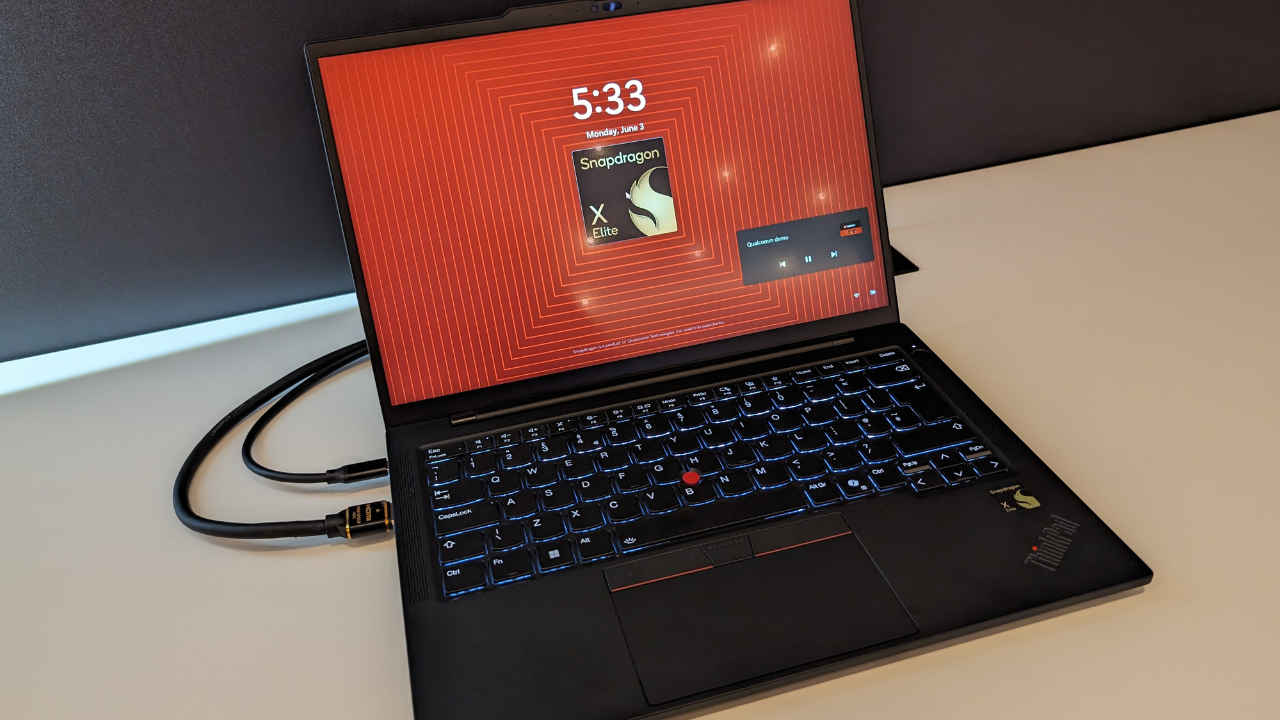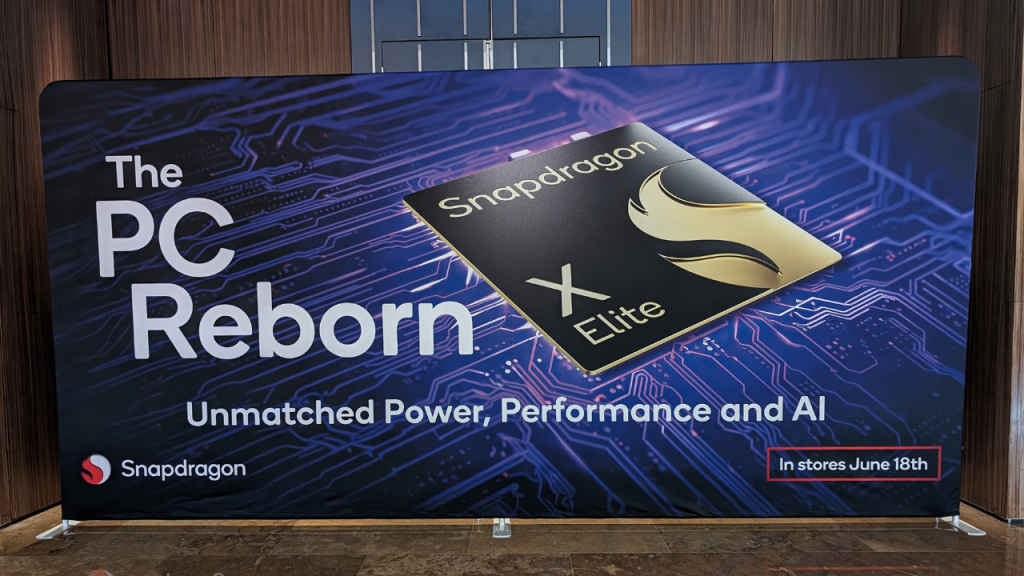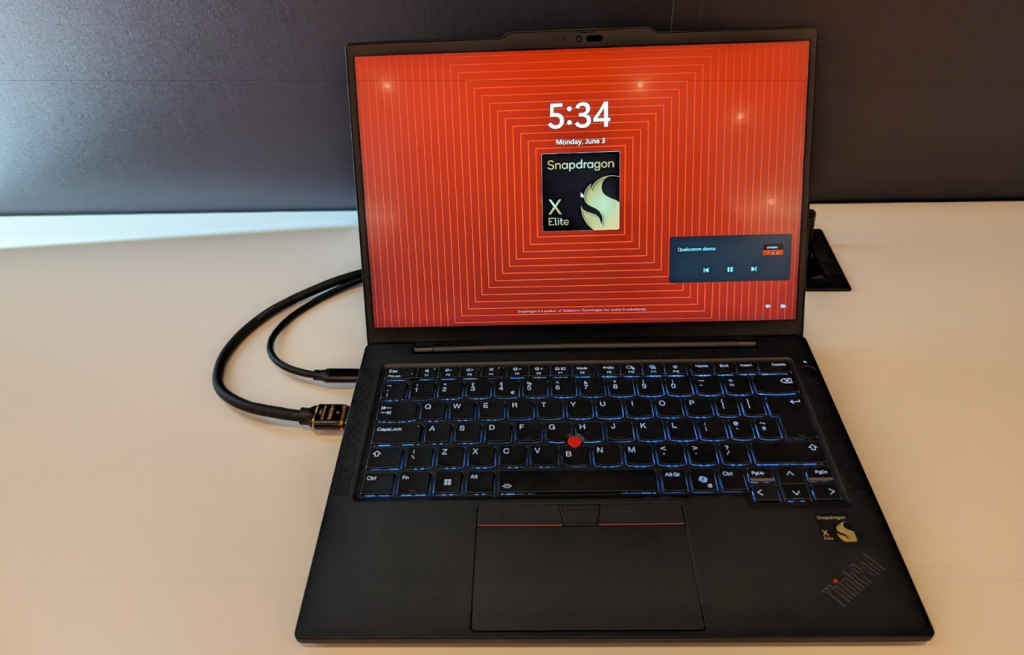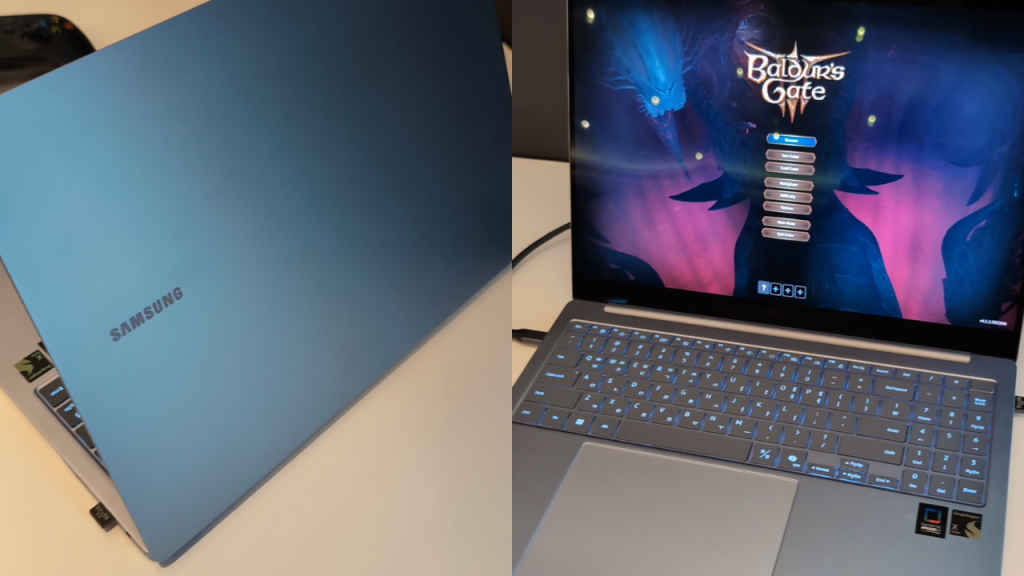Computex 2024: Hands-on with Snapdragon X Elite AI PC laptops from Acer, Lenovo, Samsung, Microsoft

On the opening day of Computex 2024, in a quiet demo room devoid of much fanfare, Qualcomm presented its latest Snapdragon X Elite-based OEM laptops and tablets for analysts and reporters (like yours truly) to try. That’s right, after smartphones, Qualcomm chips are now powering laptops. And they’re aiming to bring some of their learnings from smartphones over to laptops, boldly proclaiming it as a rebirth of the traditional PC by making it a lot smarter for AI and beyond.
 Survey
Survey
The Snapdragon X Elite is an ARM64 System-on-Chip (SoC) designed by Qualcomm, consisting of a 12-core Oryon CPU, DirectX 12 compatible Adreno GPU, and Hexagon NPU with 45 TOPS (trillion operations per second) for all the AI goodness. During its launch, Qualcomm benchmark tests of the Snapdragon X Elite on a Microsoft Surface Laptop 7 claimed impressive battery life and multi-thread performance better than that of the MacBook Air M3! The kool-aid can be intoxicating, but is it really that good?
Also read: Computex 2024: Intel CEO Pat Gelsinger outlines AI leadership, despite stiff competition
I couldn’t obviously test or run any benchmarks with my limited time on the four Snapdragon X Elite demo laptops, but in the few minutes a few things were clear. Qualcomm is definitely onto something here, with a serious chance of making inroads into the traditional PC market dominated by the likes of Intel and AMD until now.
Acer Swift 14: Unleashing the power of NPU
Looked just like a regular Acer Swift 14 laptop until I saw the Snapdragon X Elite sticker next to the trackpad. Windows 11 ran smoothly, apps opened and closed quickly, and the dedicated Copilot key launched a pop-up window with the AI chatbot instantaneously. It had Cephable, an app that lets you assign specific gestures to certain tasks, allowing users to configure and customize their own gesture-controlled tasks – like raise an eyebrow to raise volume, nod head up and down for launching an app, etc.

Also read: The AI Chip War: Intel Lunar lake vs AMD Ryzen 300 vs Qualcomm Snapdragon X Elite
The Snapdragon X Elite SoC on the Acer Swift 14 didn’t use the CPU or GPU for this task, doing full face tracking and gesture recognition in real-time solely on the NPU – which I could verify through the Windows Taskbar, showing a huge spike in NPU utilization, while the CPU and GPU were idling at single digits.
Lenovo ThinkPad T14s: Business as usual
Just like the Acer Swift, this Lenovo ThinkPad 14-inch looks like any other Intel-based ThinkPads I’ve seen in the past, until you glance upon the Snapdragon X Elite sticker logo. With its quintessential matte black finish, iconic red trackpoint button, and delight of a keyboard, the ThinkPad T14s didn’t jump out and do anything extraordinary for me – which is just as well, typical of a ThinkPad!

Microsoft Windows 11 running flawlessly (for the most part) on an ARM64-chip – not a traditional Intel x86 or AMD x64 chip – is still mind boggling for me, after all the heartbreak and disappointment of Windows RT (over a decade ago). The Copilot key on the Lenovo ThinkPad T14s worked just as well, no problems whatsoever. The laptop seemed cool on touch for the most part, which is no surprise, given the lower thermals and greater power efficiency of the Snapdragon X Elite platform. What about thermal throttling, though?
Samsung Galaxy Book4 Edge: Time for some gaming
I couldn’t tell if there was any thermal throttling or not, but I can say that gaming on the Qualcomm Snapdragon X Elite feels like a breeze – especially on the Samsung Galaxy Book4 Edge’s 16-inch AMOLED screen with 3K resolution and 120Hz refresh rate. I mean, Baldur’s Gate 3 was being mirrored from the Samsung laptop onto a big-screen TV at 4K 60 fps resolution without breaking a sweat.

Gaming peripherals connected to the Samsung Galaxy Book4 Edge – an Xbox controller and a Logitech gaming mouse – suffered from no lag whatsoever, while I used them briefly. There were a couple of other games that were being demoed on the Samsung Galaxy Book4 Edge that I observed while others tried their hand on the laptop, and from the looks of it the Qualcomm Snapdragon X Elite seems to be doing a good job with delivering an encouraging gaming experience even on higher game settings.
Copilot+ PCs with Windows Recall and AI image generation
At the Qualcomm demo zone, I also got my first taste of the Microsoft Copilot+ PCs, which Microsoft is calling the smartest Windows devices ever built – with controversial features like Recall, which can access “virtually what you have seen or done on your PC in a way that feels like having photographic memory.” This helps you remember things you may have forgotten so you can find what you’re looking for quickly and intuitively by simply using the cues you remember, says Microsoft, and I tried it out on the Copilot+ PC powered by the Snapdragon X Elite chip.

Recall in Windows 11 is scary good, searching for anything and everything related to a keyword that you enter in. For now, only Microsoft apps and services support Recall, with no word on third-party app support (which is good from a security standpoint).
Another interesting demo I tried was on the Surface Pro 9, which seemed like a local implementation of this interesting plugin called SketchRemaker-AI Sketch To Image for ChatGPT (check it out). The idea is to sketch a rudimentary image outline in a few seconds, enter a prompt to describe your image, and within 2-3 seconds you get an AI generated image resembling your original sketch and prompt. I tried it out on the Surface Pro 9 and I can tell you it happens way faster than what generating AI images on Dale-3 or Midjourney takes, which is more time consuming.

So there you have it, my first impressions on various Snapdragon X Elite-powered laptops that are hitting stores soon. With AMD’s AI PC chips and Intel’s more powerful Lunar Lake with 120 TOPS not arriving till later this year, Qualcomm’s taking the lead in the AI PC race by putting its Snapdragon X Elite powered laptops and tablets in user’s hands by June 18. And suddenly, out of nowhere, the (AI) PC is cool again – who would’ve thought? Stay tuned for our full review of these devices very soon.
Also read: Intel Lunar Lake chip aims to power new age of AI PCs at scale: Here’s how
Jayesh Shinde
Executive Editor at Digit. Technology journalist since Jan 2008, with stints at Indiatimes.com and PCWorld.in. Enthusiastic dad, reluctant traveler, weekend gamer, LOTR nerd, pseudo bon vivant. View Full Profile